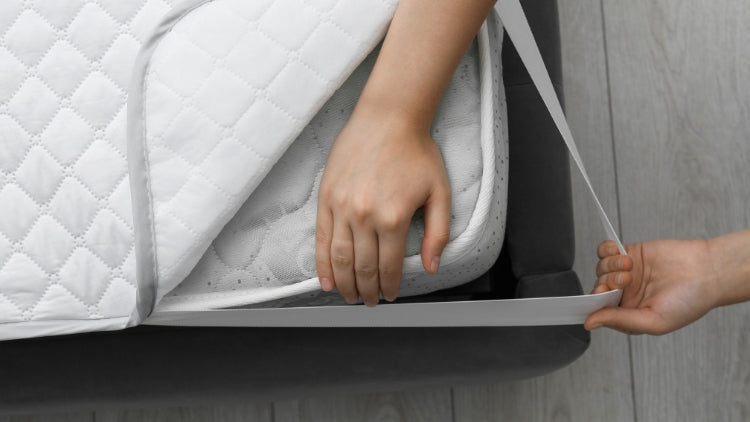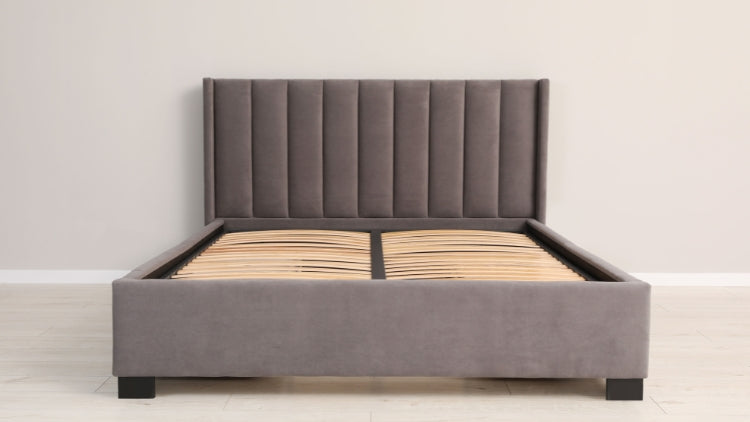A restful night is important for our general wellness, and a clean, well-maintained mattress plays a significant role in achieving that.
Mattress protectors are essential to keeping your mattress free from spills, stains, and allergens. They act as a shield, preventing dirt, sweat, and other contaminants from seeping into your mattress.
However, knowing how to wash your mattress protector correctly is essential to keeping it functioning optimally. Regular washing enhances its protective abilities and ensures a healthier sleeping environment.
In this comprehensive guide, we'll cover everything you need to know about how to wash a mattress protector so you can sleep soundly and wake up refreshed.
What Is a Mattress Protector?
A removable mattress protector shields your mattress from spills, stains, dust mites, and allergens. Mattress protectors come in various types, including waterproof, hypoallergenic, and those with additional padding for comfort. These protectors guard against routine wear and tear, helping to keep your mattress looking new for longer.
Can You Wash a Mattress Protector?
Yes, you can wash a mattress protector. Regular washing is crucial to maintain its cleanliness and functionality. Always follow the manufacturer's care instructions to avoid damaging the fabric or reducing its protective qualities. Proper washing not only removes dirt and allergens but also ensures that the mattress cover remains effective in protecting your mattress.
Steps to Wash a Mattress Protector
Washing a mattress protector is straightforward, but it's essential to do it correctly to maintain its protective qualities and longevity. Here, we'll guide you through the steps to ensure your mattress cover remains clean and effective.
1. Check the Care Label

Before washing, read the care label on your mattress protector. This label provides essential information on how to wash your specific mattress cover properly. It will indicate the recommended water temperature, washing cycle, and any special instructions for drying.
2. Pre-Treat Stains
In case of stains, pre-treat your mattress protector with a stain remover or a blend of water and mild detergent. Lightly blot the stain with a soft cloth, avoiding harsh scrubbing that might damage the fabric. Pre-treating helps to break down tough stains and ensures a thorough cleaning during the wash.
3. Choose the Right Detergent
Use a gentle detergent to wash your mattress protector. Avoid bleach and fabric softeners since they can damage the waterproof lining and reduce the fabric's softness. A gentle detergent will clean effectively without compromising the integrity of the mattress cover.
4. Select Proper Washing Settings

Wash the mattress protector in cold or lukewarm water on a gentle cycle. Hot water can damage the waterproof layer and cause shrinkage. Opting for a gentle cycle will protect the fabric and stitching, ensuring the durability of your mattress protector.
5. Drying Methods
Air drying is the best method for drying a mattress protector to prevent heat damage. If you use a dryer, select a low heat setting. Avoid high heat as it can melt the waterproof membrane and damage the fabric. Ensure the protector is dry all the way through before putting it back on your mattress to stop mold and mildew from forming.
Additional Tips for Washing Mattress Protectors
Here are some extra tips to help you get the most out of your mattress protector. These practices will ensure your mattress cover remains in top condition and continues to provide the best protection for your mattress.
- Rotate protectors regularly to ensure even wear. This helps maintain the protector's quality and provides consistent protection for your mattress.
- Use cold water to maintain fabric integrity. Cold water is gentle on the fabric and helps maintain the waterproof lining.
- Wash your mattress protector monthly or more often if you have allergies or after spills. Regular washing keeps your sleeping environment clean and reduces allergens.
How Often to Wash a Mattress Protector?
Generally, you should wash your mattress protector every one to two months. If you suffer from allergies or have recently been ill, consider washing it more frequently to keep your sleeping environment clean and healthy. Regular washing helps remove dust mites, allergens, and bacteria accumulating over time.
Keep Your Bed Clean with a Fresh Mattress Protector!
Proper care and regular washing of your mattress protector ensure a healthy and comfortable sleeping environment. Following these simple steps helps extend the lifespan of your mattress cover and shields your mattress from potential damage. Shop our selection of mattress protectors from Blissful Nights for high-quality protection and enhanced comfortFrequently Asked Questions
Can I wash a mattress protector in hot water?
Avoid hot water, which can damage the waterproof membrane and cause shrinkage. Use cold or lukewarm water instead. Cold water is gentle on the fabric and helps maintain the protector's functionality.
Is it necessary to wash a new mattress protector before using it?
Yes, washing a new mattress protector removes any manufacturing residues and ensures it is clean and ready to use. Pre-washing helps to soften the fabric and remove any chemicals used during production.
Can a mattress protector help with allergies?
Yes, mattress protectors can block allergens such as dust mites, pet dander, and pollen, helping to reduce allergic reactions. Regular washing of the protector further reduces the presence of allergens.
How do I store my mattress protector when not in use?
Ensure the mattress protector is completely dry before storing it in a cool, dry place. Use a breathable storage bag to safeguard it from dust and pests.
Can I iron my mattress protector?
No, ironing a mattress protector is not recommended. The heat from an iron may compromise the waterproof barrier and damage the fabric.





Leave a comment
This site is protected by hCaptcha and the hCaptcha Privacy Policy and Terms of Service apply.